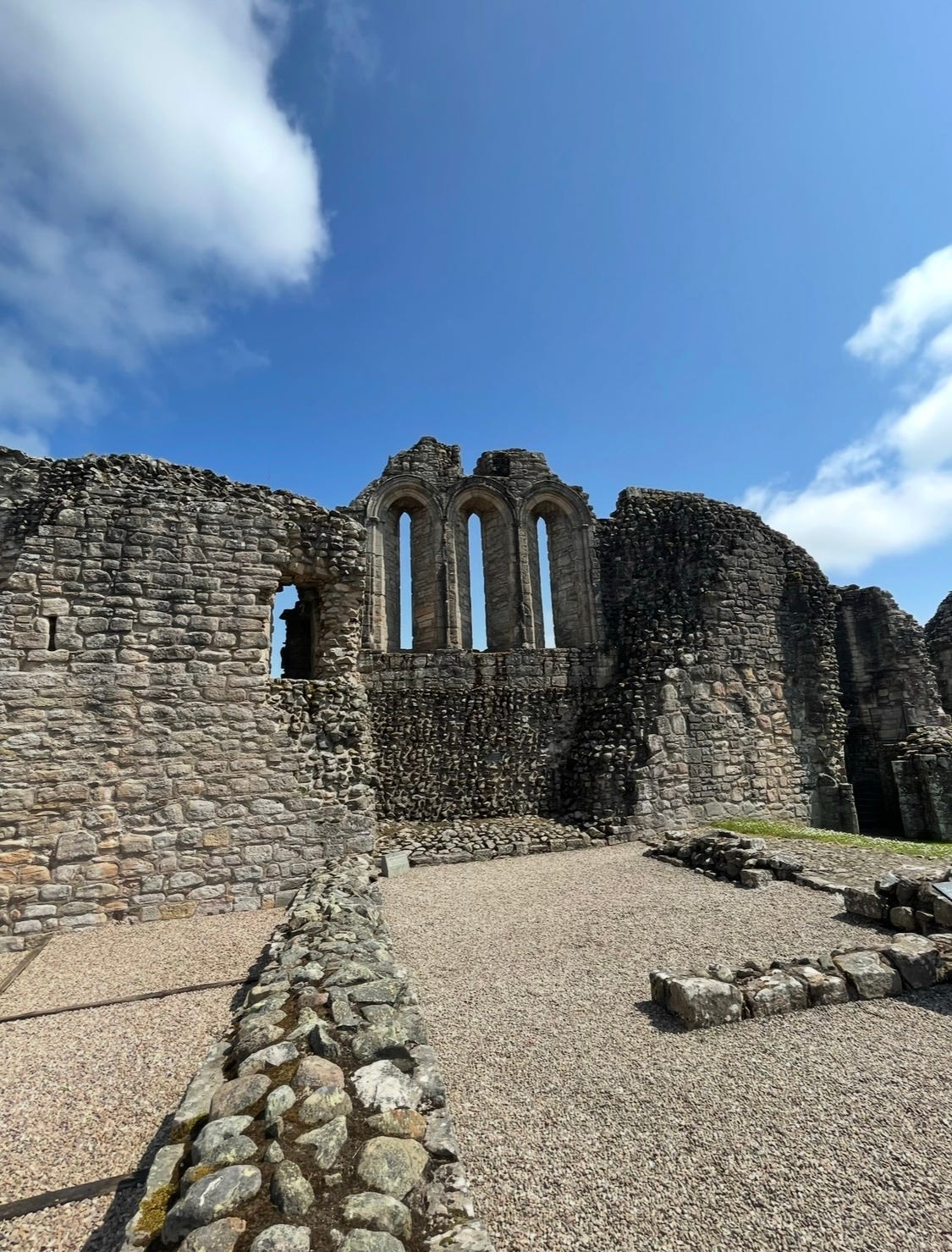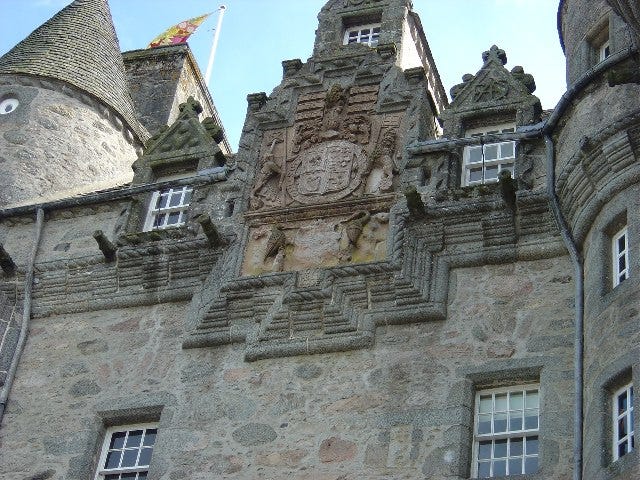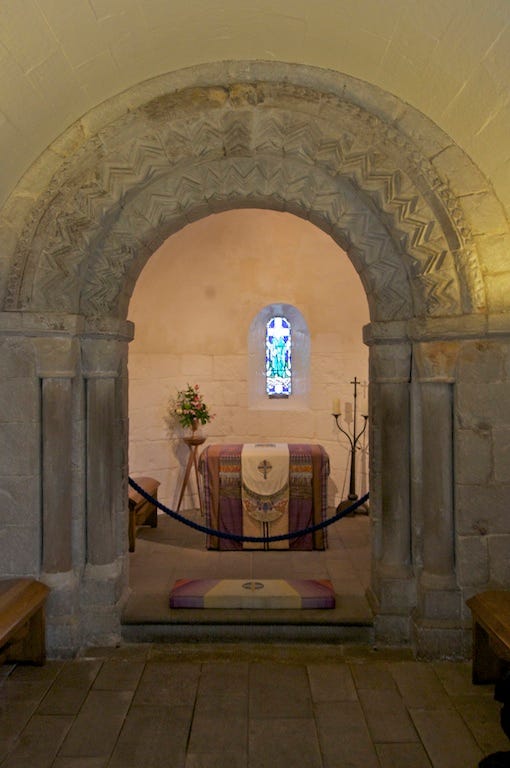Hidden Scottish Catholicism: Private Worship
Kirsten Schouweenars-Harms continues her series on the lesser known history of Scottish Catholicism.
The churches of Asia send greetings. Aquila and Prisca, together with the church in their house, greet you warmly in the Lord. (1 Cor. 16:19)
Following the Lord’s commands was not easy for the early Christians. Beside the fact that they were persecuted for their beliefs, they also didn’t yet have designated church buildings such as we have today. Therefore, they used house churches were worshipping the Lord, the breaking of bread and fellowship was made central in a domestic atmosphere. These places of worship in the home could be considered private chapels.
Throughout history, private chapels have been places of Christian worship without parochial status. Therefore, chapels did not benefit from the system of tithes which supported parish churches for centuries. A chapel could be built and supported by private donors, by a guild, by a charitable, educational or religious body, or by a nonconformist congregation.
In part 4 of the Hidden Scottish Catholicism series, I will reveal some of these private chapels that are to be found in Scotland.
Private chapels
In the Middle Ages chapels were often installed in great houses, castles and in royal and bishop's palace. These were private places of devotion for powerful men and their households, served by chaplains. Created for people of power who preferred to worship in peace, unlike the often busy parish churches. However, there is some evidence that, much like early Christians, at times the local community would be invited to the private chapels as well. Many of these spaces have been lost, due to time, the Protestant Reformation and the fall of many noble houses. But let’s see if we can rediscover some of them.
Huntly Castle
A truly hidden, even invisible and possibly impossible to find, private chapel is that of Huntly Castle. The beautiful building in Huntly, Aberdeenshire, is well preserved in areas. However, it is remarkable that in this stronghold of a very prominent Catholic family, the Earls of Huntly (subsequently Marquises of Huntly and Dukes of Gordon) both pre- and post-reformation, there are no obvious signs of a private chapel. Historians and archaeologists have however suggested that the likely location of a chapel will have been leading off the great hall, with the altar facing east, So, even though physically lost in the past, I prefer to think of this particular chapel being hidden from sight. For once God resided in that place, and since He lives outside of space and time, we can still offer up a prayer in the space where once stone walls sheltered His presence.
Kildrummy Castle
A little further south of Huntly we can find the remains of Kildrummy castle. Unlike in Huntly here we can still find some remains of the private chapels’ outer wall and three remaining tall, elegant windows that once lit the high altar. Seen from above the distinct shield shape of the castle is interrupted by the oddly protruding, chapel wall from the curtain wall. Looking at the situation of the castle it seems likely that this protuberance was intentional to make sure that the high altar pointed duly east. The castle was built in the 13th century and for around 2 centuries it was the home of the Earls of Mar. The 17th century Erskine Earls of Mar were loyal to the Catholic King James VII and II and led the Jacobite rising of 1715. The castle was one of the bases Mar used during the rising. When this failed Kildrummy’s days and with it the private chapels ended. The castle was dismantled and used as a stone quarry. It is an interesting thought that whenever you see buildings in the Kildrummy areas, stones used for these buildings may well have been the building stones of this once-consecrated building in which the Lord resided.
Fraser Castle
"Castle Fraser Coat of Arms - geograph.org.uk - 55321" by Iain Millar is licensed under CC BY-SA 2.0.
Not far from the ruined castles of Huntly and Kildrummy, we can find the beautifully preserved Fraser Castle. Charles Fraser supported the Earl of Mar of Killdrummy when he started the Jacobite rebellion. His Catholic alliance is also evident in a small room that has once served as a bathroom and a school room. It is not immediately evident that the room was once a dedicated private chapel. However, on closer inspection, the signs are there. There is a secret chamber in front of the heart which is likely to have been a priest hole. Moreover, there is an Arma Christi, the coat of arms for Christ, on the outside wall under the window depicting the 5 wounds of Christ. These features show the hidden importance that this room served several centuries ago.
Margeret’s Chapel, Edinburgh Castle
Although the above-mentioned chapels were all found within the walls of castles, this was not the case for all private chapels. Sometimes families commissioned consecrated buildings outside of the family home. Wanting a chapel that was too large to fit within the walls of their residence or preferring a specific spot within the grounds of their estate was deemed more appropriate for building a house of God. One such sacred building is the place where Scotland's royal family once knelt to worship. St Margaret’s Chapel can still be found within the complex of buildings that make up Edinburgh Castle. This small building is only about 4.5m wide by 9m long and is built right at the highest point of the castle — what must have been considered a laudable location for communing with God. It is thought to be the oldest surviving building in the city which still retains something of its original function. The chapel was built by King David I around 1130 and was named for his mother, the now patron saint of Scotland St Margaret. It has survived fire, war, the Reformation, and a rise in tourism over the last couple of decades — but still it stands! Being located within the castle grounds there was no reason to cover up this house of God, but equally due to its location, it would not have been a place where the public came to worship and thus could be considered hidden. Even more reason for us now to visit this building now we have the opportunity while at the same time imagining all those that came before.
Innerpeffray Chapel
"Innerpeffray Chapel 20090616 interior looking west" by Otter is licensed under CC BY-SA 3.0.
Another private, and relatively large, chapel, outside the walls of the family home, is Innerpeffray Chapel. It is not necessarily hidden but you would not stumble across it unless you go in search of it. Its location on the east bank of the river Earn a little over three miles south-east of Crieff is wonderful. The first church built at Innerpeffray dates to 1365, but nothing can be found of this structure. Although there is some evidence that the altar standing on the east end wall of the current chapel, dates from that time. The current private chapel, however, was built by the 1st Lord of Drummond in 1507. Initially used for private worship, it also employed 4 chaplains to pray for the wellbeing of their benefactor and his family, both in this life and the next. In 1542 these chaplains formed a small community as a "collegiate church. Luckily the chapel survived the Protestant Reformation by being converted into a family burial vault for the Drummonds, and evidence suggests that the family remained faithful Catholics throughout the ages. In the 17th century the 3rd Lord, who was a renowned scholar, had a collection of 400 books. These he kept in the chapel for about 100 years, being used as the first public lending library in Scotland. Now the chapel today is an interesting example of a collegiate church unusually still standing after the Reformation. It houses many glorious old gravestones including the extraordinary Faichney monument. While the building may appear rather common now, if you spend some time looking at the more hidden features of the building, the obvious Catholic history becomes apparent. Spending some time in the building may well reconnect us to other faithful through time and space.
The chapels I have recounted here show how truly hidden, even undiscovered, and merely not obvious, house churches can be found throughout Scotland. If you spend the time investigating many such chapels still exist in some form or another Next time you visit an old castle or prominent building keep your eyes peeled. A room may show some inconspicuous evidence of a private room of prayer or even a fully consecrated chapel. Just because there is no Tabernacle, no stained-glass window, bible or crucifix present, doesn’t mean that a place was not at some point where a family glorified the Lord away from prying eyes.
By Kirsten Schouweenars-Harms
Elsewhere in the Coracle
The month of March sees some of our Isles most important saints, including; St Patrick, St Cuthbert and St John Ogilvie. But have a look out for the lesser known, including St Baldred of the Bass, St Curetan (Fortrose) and St Monan (Fife).
Some Writing You Might Have Missed
Early Morning Rosary: The refreshing joy of a 6am men’s rosary group.
Thinking with St Patrick: To prepare yourself for his feast day why not join Dr Carly McNamara as she discusses some of the saints own writing.
Illustrious Women: Professor Stephen Mckinney writes about the woman who became Scotland’s first Religious since the Reformation - Sr Agnes Xavier Trail.
From Around the Web Today
Why Pagans Convert: Lucy Fraser, contributor to St Moluag’s Coracle and herself a writer on Substack talks about Paganism. A fascinating read.
We Believe: We Believe is a Festival of Catholic Life celebrating the Jubilee Year of Hope. This July, we are gathering the whole Church to celebrate our faith in Jesus.
This festival is brand new and you are invited to build it with us.






